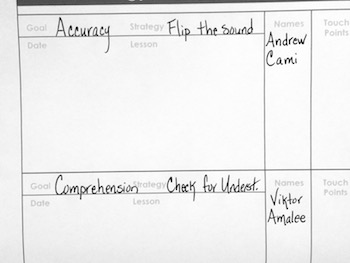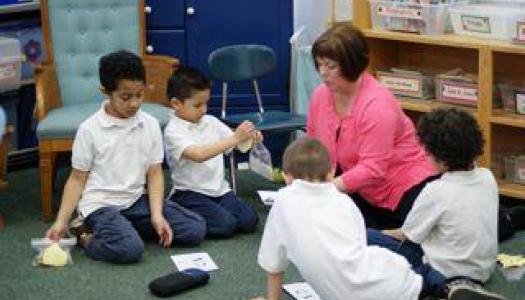How do you form your small groups?
Join Our Community
Access this resource now. Get up to three resources every month for free.
Choose from thousands of articles, lessons, guides, videos, and printables.

We plan for our whole-group, small-group, and individual instruction as we assess our students and monitor their progress.
Let's say we notice that a student relies on one sound that a letter makes when they sound out unknown words. Learning to Flip the sound (for example: short a to long a, hard c to soft c, and so on) will dramatically help their accuracy improve. So we take out our Strategy Groups and Instruction form, write Accuracy next to Goal, Flip the Sound next to Strategy, and the student's name in the Names column. As we assess, we continue to add students with the same need to this group. Once the group is identified, we can begin to record the date and lessons we teach, and how students progress toward using the strategy independently (Touch Points). Once they demonstrate proficiency a few times in a row, students are moved out of the group.
Here is another example: If a student isn't retaining what they read, we write Comprehension next to Goal and Check for Understanding next to Strategy, and add their name to this group. Lessons with these students will be recorded, and we'll use Touch Points to help us determine when the students are ready to be moved out of the group.
Keep in mind that current research says the optimum size for a small group is two or three students. This is a big shift from the groups of five or six that we tried to manage early in our careers. So we keep these groups small. If the majority of the students need a skill or strategy, we teach it to the whole group. If only one student needs the content, we teach it one-on-one.
We are finding that many teachers are discovering that they are better able to meet the diverse needs of their learners by moving away from groups altogether. Joan has a few thoughts about this, and Joan and Gail answer this question directly in Rachel's classroom.







